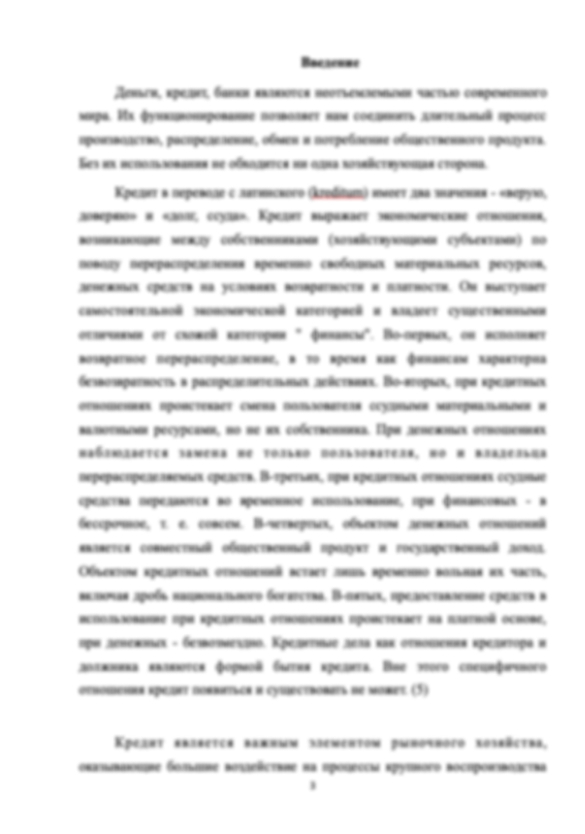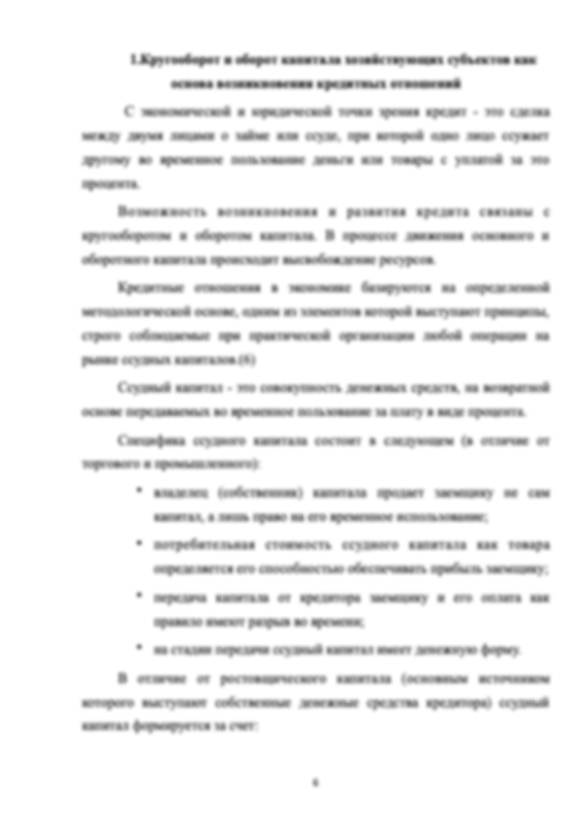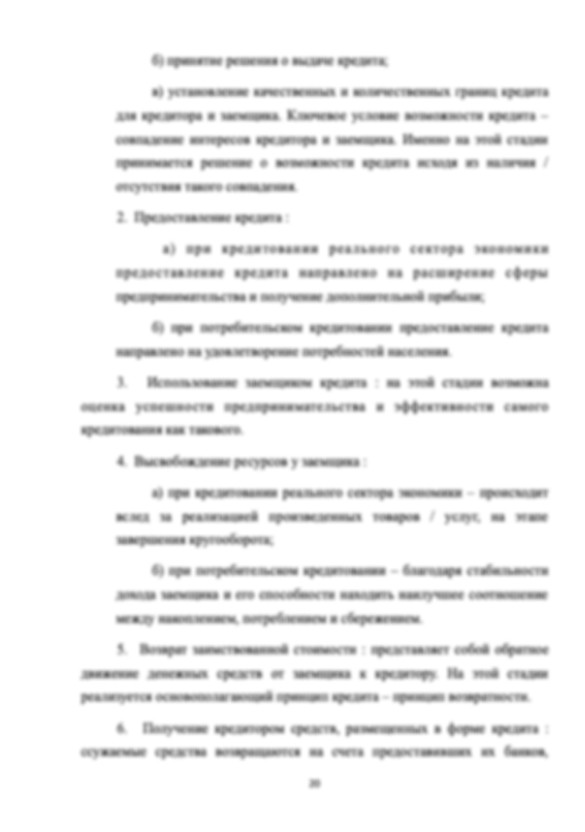Очень ответственный автор. Работы выполнена раньше срока, все пожелания и требования по работе учтены. Рекомендую
Информация о работе
Подробнее о работе

SOCIAL FUNCTION OF INTONATION
- 36 страниц
- 2019 год
- 32 просмотра
- 0 покупок
Гарантия сервиса Автор24
Уникальность не ниже 50%
Фрагменты работ
Contents
INTRODUCTION 2
CHAPTER 1. INTONATION AS A MEANS OF MAKING SPEECH 5
1.1. The general meaning of intonation 5
1.1.1. THE MELODICS 7
1.1.2. THE PAUSE 9
1.1.3. The duration and temp 11
1.1.4. The intensity 12
1.1.5. The prosodic timbre 13
1.2. Intonation and speech acts 14
CONCLUSIONS TO CHAPTER 1 15
CHAPTER 2. THE FUNCTIONAL ASPECT OF INTONATION 16
2.1. Functions of intonation 16
2.2. Social function of intonation 23
CONCLUSIONS BY CHAPTER 2 26
CONCLUSION 27
1.1. The general meaning of intonation
The form of intonation has now been described in some detail, and we will move on to look more closely at its functions. Perhaps the best way to start on this is to ask ourselves what would be lost if we were to speak without intonation: you should try to imagine speech in which every syllable was said on the same level pitch, with no pauses and no changes in speed or loudness. This is the sort of speech that would be produced by a “mechanical speech” device that made sentences by putting together recordings of isolated words. To put in the broadest possible terms, we can see that intonation makes it easier for a listener to understand what a speaker is trying convey. The ways in which intonation does this are very complex, and many suggestions have been made for ways of isolating different functions. Among the most often proposed are the following:
1.
...
1.1.1. THE MELODICS
The complex prosodic means melody plays a leading role. This is because in nontonal languages a sign of greater or lesser pitch is almost never used to contrast the segmental units (phonemes), and to distinguish between the sound of shells of morphemes and words. The versatility of the high-rise component of intonation manifests itself in that the melody is used as the most important prosodic means in a variety of languages, and that within one language the melody serves the different functions of intonation. This contributes not only to a small degree of employment of the melody on a segment level, but also the richness of the prisoners in this intonation component distinctive features.
Articulatory basis of the differences of sounds on height, which in phonetics is often called melodic, is the different speed of vibrations of the vocal cords.
...
1.1.2. THE PAUSE
The pause holds a specific place among intonation components. Being functionally supersegment phenomenon, physically it represents a special, “empty” segment. Most often the pause is defined as having rummaged in sounding or the termination of a fonation for certain (usually quite continuous) time. Then an acoustic correlate of a pause is falling of intensity to zero, and physiological - a stop in proiznositelny work of bodies, their reduction in a condition of rest.
However, the pause as the physical phenomenon does not coincide with what usually is understood as a pause in phonetic researches. On the one hand, not any break in sounding is a pause.
Complete cessation of foundation takes place and on a phase bows of breath consonants, being their component. On the other hand, the perceived pause not necessarily represents a full break in sounding: it can be filled (to neutral vowels, combinations of sounds).
...
1.1.3. The duration and temp
The length of the speech units (and their components) in time - a necessary condition of their existence. To one or the other speech unit can be implemented by the speaker and perceived by the hearer, it takes time, various for different elements is required.
The duration of large and complex structure units is determined by the number of their constituent elements: a phrase containing a greater number of the sounds is typically longer duration than a phrase, which has fewer sounds, and although there is a tendency to equalize the durations of speech units of the same rank.
However, the variability of duration of speech components of the chain are quite large and are available in a given language, the range of values of the duration of sounds can be used to transfer a special - prosodic information.
...
1.1.4. The intensity
Consideration of the intensity as a separate component of intonation is rare in intonational studies. Meanwhile, the intensity is the same necessary condition for the articulation and perception of sound as duration and frequency. Quite a large range of variation of this parameter in the speech allows us to expect using it to transfer diverse information.
The reason for the low popularity of the intensity compared to the other prosodic characteristics is not only marginally investigated it, but that is partially dynamic component of intonation is considered in the analysis of accent or of emphasis.
The close relationship between the intensity and stress is because the main function of intensity - the selection of individual elements of the speech chain.
...
1.1.5. The prosodic timbre
Being one of the fundamental characteristics of sound, timbre serves mainly the segmental aspect of speech. Most researchers do without the analysis of the spectral characteristics and is restricted to the most general observations about the importance of voice for emotive speech, referring to the lack of this issue.
However, there is a field of study the speech in which a timbre color is given great importance. Research on stage and public speaking, mostly in second half of 19th - early 20th century, which, as a rule, are not taken into account in modern linguistics. This can be explained by the fact that for neutral speech to emotional attitude, which until now has been the subject of experimental research, intonation is not crucial. Differences in timbre are not involved in the transfer of the communicative functions of intonation and appear only in the expression of specific emotions (contempt, anger, ridicule, etc.
...
1.2. Intonation and speech acts
Intonation and pragmatics are two fields related to the domain of utterance. Consequently, many studies examine and explain the role of intonation and some pragmatic phenomena. Speech acts is one of the most recent fields that are studied in relation with intonation. Tamota [56: 1-10] proposes a new schema to determine the illocutionary act of an utterance. The informants are asked to identify the sentence type and intonation contour of a given English utterance. Speech acts are represented as three basic categories, the illocutions of assertion, question and request. The results show that the informants are able to identify 90% of speech acts. Delin and Zacharski [37: 1-7] describe some aspects of the interaction between pragmatics and intonation in dialogues. They concentrate on the relationship between pragmatics and two intonational components: register and pitch placement.
...
2.1. Functions of intonation
THE ATTITUDINAL FUNCTION OF INTONATION
It is the best studied by analyzing real-life samples of spokencommunication and attempting to draw general conclusions. The function only becomes clear when it is related to the semantics of the utterance. Asingle intonation pattern may have different meanings in different intonation - there isno one-to-one correspondence. The attitude may be towards:
• The listener;
• What is said;
• Some external event or situation.
It may be expressed on purpose or involuntarily. The range of possible attitudes is hard to outline, e.g. a sentence “I want to buy a new car” may be uttered in such a way that it indicates that the speaker is: pleading, angry, sad, happy, proud, impatient, etc.
...
2.2. Social function of intonation
Intonation is the most important sign-sounding, speaking, tool design statements, to clarify its communicative meaning and emotionally expressive shades.
At the present stage the linguistics is subject to influence cross-disciplinary approach which is represented very natural: at first it is necessary to understand a being of a subject (analysis), and then to correlate it to others objects (synthesis). Such approach allows revealing the new parties known long ago and, it would seem, the studied phenomena.
Obviously, every utterance (communicative unit) from pause to pause regardless of length must be made phonetically. All components intonation (melody, phrasal stress, tempo, timbre, rhythm), in addition to the pause, certainly present in the statement, because no element of it cannot be spoken without any pitch, power, etc.
...
CONCLUSIONS BY CHAPTER 2
Intonation in combination with appropriate grammatical structure of the sentence and its lexical composition is an important means of expressing values statements. The most well-known components of intonation are melody and accent. So, in English, for example, there are two main speech melodies, two tones: falling and rising. The descending tone expresses finality statements, categorical. Therefore, affirmative sentences are pronounced with the descending tone.
The social function of intonation is based on the cultural aspect and can be characterized as a means of social features.
The descending tone in the English language is used in the imperative and declarative sentences. However, the falling tone in English is a peculiar character: it is sharper and deeper than in Russian. The melody closely associated with phrasal accent.
...
1. Анощенкова А.М. Интонационные характеристики спонтанной речи и чтения диалогического текста: Дис. на соискание уч. ст. канд. филол. наук. М., 1977.
2. Бакушева Е.М. Особенности эмоциональной речи мужчин и женщин (на материале французского языка) // Язык и эмоции. Волгоград, 1995. -С. 32-37.
3. Бакушева Е.М. Социолингвистика и анализ речевого поведения мужчин и женщин в современном обществе. Рязань: Изд-во РГПИ им. С.А. Есенина, 1992. - 14 стр.
4. Барышникова К.К. О лингвистическом аспекте фоностилистических исследований // Звуки, слоговой акцент, интонация: Материалы коллоквиума по экспериментальной фонетике и психологии речи. -Вильнюс: ВГПИ, 1972. С.267-278.
5. Барышникова К.К. Ритм и интонация // Acta Universitatis Carolinae, Philologica 1, Phonetica pragensia III. -Pr.: Universitata Karlowa, 1972. -P. 49-51.
6. Бродович О.И. Диалектная вариативность английского языка: аспекты теории. JL: Изд-во Ленинградского Университета, 1988. -196 с.
7. Бродович О.И. Английская диалектная вариативность: типологический и общетеоретический аспекты: автореф. дис.. д-ра филол. наук. СПб., 1991. -42с.
8. Брызгунова Е.А. Звуки и интонация русской речи. М., 1983. - 239 с. Буренина Н.В. Эмоциональные конструкции английской диалогической речи: Автореф. дис. . канд. филол. наук. - Саранск, 1989. - 15 с.
9. Вишневская Г.М. Об интерференции на супрасегментном уровне при овладении иностранным языком // Национальное и интернациональное в развитии языков. Иваново: Изд-во Ивановск. ун-та, 1984. - С. 28 —32.
10. Вишневская Г.М. Интерференция и акцент (на материале интонационных ошибок при изучении неродного языка): дис.. д-ра филол.наук. Спб., 1993. - 481с.
11. Ганус С.А. Британский и американский типы произношения в актерской речи: на материале американского художественного фильма: дис.. канд. филол. наук. М., 2005. - 220 с.
12. Касевич В.Б. Комментарии к ответам на анкету «Об основах теории интонации» // Проблемы фонетики. Сб.статей. Часть 2,- М.,1995. Стр. 197199.
13. Касевич В.Б. Об основах теории интонации // Проблемы фонетики. Сб.статей. / Под ред Л.Л.Касаткина. Часть 1. -М.,1993. С.59-60. Кереева С.Б. Социальная обусловленность интонационной вариативности речи: Автореф. дис. . канд. филол. наук. -М., 1988. -24 с.
14. Лопатько В.В. Просодия периода в английском языке: Дис. на соискание уч. ст. канд. филол. наук. Киев, 1977.,
15. Майорова П.А. Текстообразующие функции интонации (на материале английского языка: Дис. на соискание уч. ст. канд. филол. наук. М., 1980.
16. Нушикян Э.А. Иерархическая структура временных составляющих ритма эмоционального текста // Речевой ритм и его функции. М., 1987. - С. 129138. ( Тр./ МГПИИЯ им. М.Тореза; вып 293).
17. Нушикян Э.А. К проблеме сегментации эмоционально окрашенного текста // Просодическая структура текста. М., 1984. - С. 149-162. (Тр./ МГПИИЯ им. М.Тореза; вып. 230.
18. Нушикян Э.А. Типология интонаций эмоциональной речи. Киев -Одесса: «Вища школа», 1986. - 160 с.
19. Николаева Т.М. Фразовая интонация славянских языков. М.: Наука, 1977-278 с.
20. Николаева Т.М. Языковые функции фразовой интонации и ее лингвистический статус. В книге «Вопросы фонологии и фонетики». М: Наука, 1971. С.131-147.
21. Пинаева Ж.Б. О некоторых интонационных особенностях чтения английских художественных и научных текстов: Дис. на соискание уч. ст. канд. филол. наук. М., 1975., с.54].
22. Потапова Р.К. Коннотативная паралингвистика. М: Триада, 1998. - 67 стр.
23. Потапов В.В. Речевой ритм в диахронии и синхронии. М.: МГЛУ, 1996. -179 с.
24. Потапова Р.К., Михайлов. В.Г. Основы речевой акустики. М.: МГЛУ «Рема», 2012. - 493 с.
25. Потапова Р.К., Потапов В.В. Язык, речь, личность. М.: Языки славянских культур, 2006. - 496 с.
26. Потапова Р.К, Потапов В.В. Речевая коммуникация: от звука к высказыванию М.: Языки славянских культур, 2012. - 464 с.
27. Скопинцева Т.С. Территориальная вариативность интонации на Британских островах: дис.. канд. филол. наук. Москва, 1995. - 191 с.
28. Скуланова Г.М. Региональная вариативность интонации (на материале английского языка в Шотландии): дис.. канд. филол. наук. М., 1987. -165 с.
29. Торсуева И.Г Теория интонации. М.: Изд-во МГПИИЯ им.М.Тореза, 1979. -206 с.
30. Торсуева И.Г. Интонация и смысл высказывания. М.: Изд-во МГПИИЯ им. М.Тореза, 1979. - 111 с.
31. Шевченко Т.Н. Теоретическая фонетика английского языка: Учебник. М.: Высшая школа, 2006. - 191 с.
32. Шевченко Т.И. Фонетика и фонология английского языка: Курс теоретической фонетики английского языка для бакалавров. Дубна: Феникс+, 2011. -256 с.
33. Шевченко Т.И. Социолингвистическая обусловленность эмоциональной интонации (на материале современной английской драмы) // Вопросы фоностилистики. М., 1980., Kingdon R. A groundwork of English intonation. London, 1959.
34. Brown G., Currie K., Kenworthy J. Questions of intonation. London, 1980.
35. Crystal D. Prosodic system and intonation in English. Cambridge, 1969.
36. Dorian N. Language Death- the Life Cycle of Scottish Gaelic Dialect. -Philadelphia: University of Philadelphia Press, 1981. - 256 p.
37. Delin, J. and Zacharski (1995). “Pragmatic Determinants of Intonation Contours for Dialogue System”.
38. Ferguson C. Diglossia // Word 15, 1959. Vol. 37 - №3. - P. 325 - 340.
39. Ferguson C. Language Structure and Language Use / Essays by C. Ferguson // Selected and introd. by Anwar S. Dil. Stanford: Stanford university Press, 1971. - 327 p.
40. Fishman J. A. The Sociology of Language: an Interdisciplinary Social Science Approach to Language in Society. The Hague: Mouton Publishers, 1972. - 4181. P
41. Gimson A. C. An introduction to the pronunciation of English. London, 1972.
42. Haugen E. Language Conflict and Language Planning: the Case of Modern Norwegian. Cambridge, MA: Harvard University Press, 1966. - 393 p.
43. Hirschberg, J. (2006). “Pragmatics and intonation”. In: The Handbook of Pragmatics. (Horn, L.R and Gregory ED.)UK: Blackwell Publishing, pp. 515-537.
44. Janota P. Personal characteristics of speech // Transactions of Czechoslovak Academy of Sciences, 1967. V. 77. № 1
45. Key M. R. Linguistic behavior of males and females // Linguistics. 1972. 88. P. 15-31
46. Labov W. Sociolinguistic Patterns. Philadelphia: University of Pennsylvania Press, 1972. - 362 p.
47. Labov W. Principles of Linguistic Change. Vol. 1: Internal Factors. -Oxford: Blackwell, 1994. - 672 p.
48. Labov W. Principles of Linguistic Change. Vol. 2: Social factors. -Oxford: Blackwell, 2001. - 542 p.
49. Labov W. Principles of Linguistic Change. Vol. 3: Cognitive and Cultural Factors. - Oxford: Blackwell, 2010. - 419 p. Paul H. Prinzipien der Sprachgeschichte. Halle, Niemeyer, 1920. - 442 s.
50. Ladd D.R. Intonational Phonology. Cambridge: Cambridge University Press, 1996.-400 p.
51. Leon P. Contribution a l'etude des Voix de Charme. // Proceedings of the 9th International congress of phonetic sciences. V. 1. Copenhagen, 1979. P. 442
52. Myers-Scotton C. Code-switching // The Handbook of Sociolinguistics / Coulmas F. (ed.). Somerset, New Jersey, U.S.A.: Blackwell Pub., 1996. - P. 217 -238.
53. Milroy L. Language and Social Networks. Oxford. : Basil Blackwell. -1980.-232 p.
54. Milroy J., Milroy L. Varieties and Variation // The Handbook of Sociolinguistics / J. Milroy and L. Milroy (eds.). Oxford: Blackwell Publishers Ltd, 1996.-P. 47-64.
55. Pierrehumbert J. The Next Toolkit // Journal of Phonetics. 2006. - Vol. 34 - №4. - P. 516-530.
56. Tamota, M. and Takeshi, K (1993). "A schema for illocutionary act identification with prosodic feature". Japan: Atsugi-city. Trudgill P. The Social Differentiation of English in Norwich. Cambridge: Cambridge University Press, 1974. - 208 p.
57. Trudgill P. International English: A Guide to Varieties of Standard English / P. Trudgill, J. Hannah (eds.). London: Arnold, 1985. - 130 p.
58. Trudgill P. Sociolinguistics: an Introduction to language and society / P. Trudgill (ed.). London: Penguin Books, 2000. - 222 p.
59. Vassilyev V.A. English Phonetics. A theoretical Course. Moscow: Higher School Publishing House, 1970. - 345 p.: 290
60. Veliz, M. (2004) "Intonational devices used in the distinction of speech acts". Chile: Catlica Cardenal Raul Silva Henriquez University.
61. Williams B. 1985. Pitch and Duration in Welsh Stress Perception: The Implications for Intonation//Journal of Phonetics 1985. -№ 13. -P. 381 -406.
62. Williams B. An Acoustic Study of Some Features of Welsh Prosody // Intonation in Discourse / Johnes-Lewis, Catherine (ed.). London and Sidney: 181
63. Williams B. The phonetic manifestation of stress in Welsh// Word Prosodie Systems in the Languages of Europe / Harry van der Hülst (ed.). Berlin; New York: Mouton de Gruyter, 1999. - P. 311 - 334.
Форма заказа новой работы
Не подошла эта работа?
Закажи новую работу, сделанную по твоим требованиям


